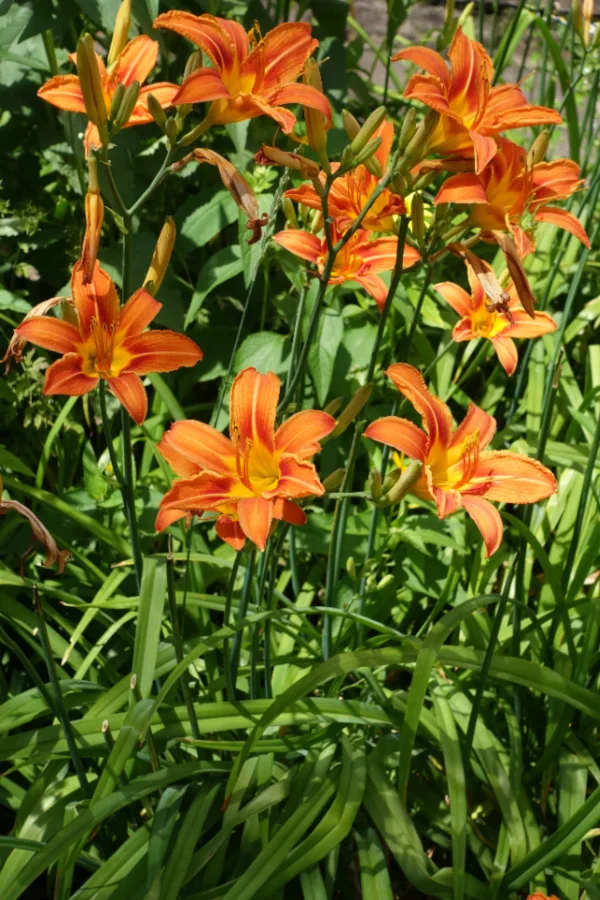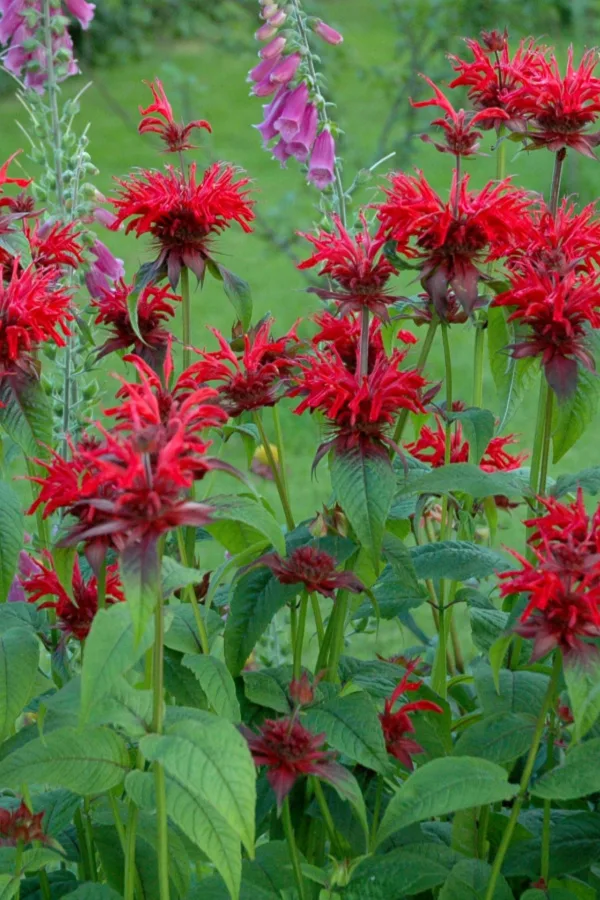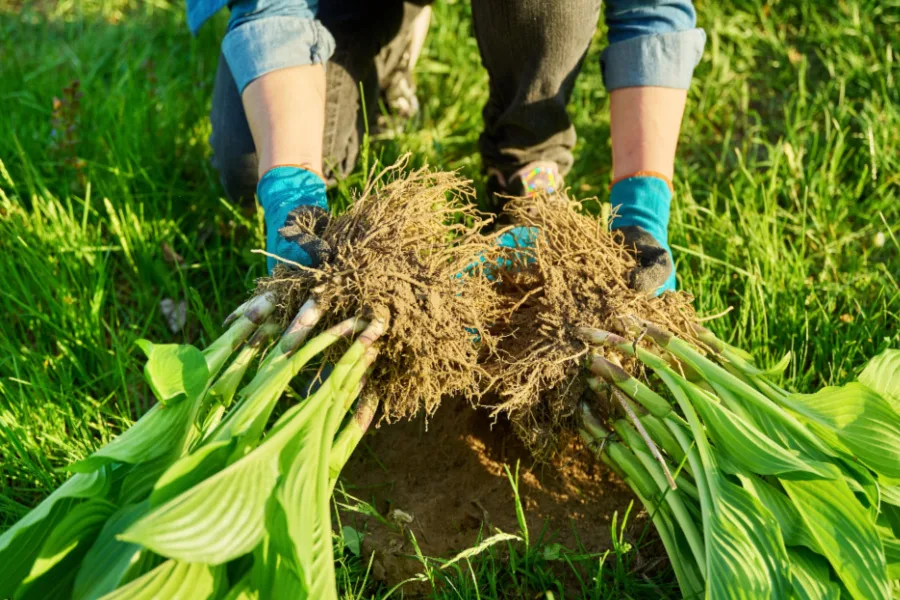Did you know that summer is one of the best times of all to divide many of the existing perennial plants in your flowerbeds and landscape?
Although spring and fall are popular times for splitting and dividing perennials, you can divide many perennials as soon as they finish blooming – right in the middle of summer! Not only is it easy, but mid-season dividing has a tremendous amount of advantages over spring and fall.
Dividing plants in the middle of the growing season gives you the opportunity to view your flowerbeds in “full growing” mode. This is a tremendous help, as you can truly tell which plants are growing too closely together, and which are simply getting too big for their space.

Dividing in mid-summer also allows you to easily see where you need to add additional plants to fill open spaces. Why is this so important? Because filling your flowerbeds with plants is the best way to help keep them weed-free. The more plants you have to fill the space, the less chance there are for weeds to find a home.
Even better, when you fill your beds with plants, it means there is less need for mulch. And not having to purchase and put down mulch can be quite the savings in both time and money!
How Dividing Perennials In The Summer Helps Plants
Summer dividing is also extremely helpful and advantageous for the plants as well. By dividing in the summer, plants have plenty of time to establish their roots in the soil. In many cases, perennials have time to develop thick foliage as well before winter sets in.
Not only does this prepare the plants well for winter survival, it also sets the stage for the plant to perform incredibly well the following year.

That simply isn’t the case for many spring or fall divided perennials. When you divide plants in the spring, they usually struggle the first year to bloom. Likewise, fall perennials don’t often establish well enough to really grow to their full potential the following year.
With all of that in mind, here is a look at which plants can be best divided in the summer months, along with the best methods for digging them up, dividing, and replanting.
How To Divide Perennials In The Summer
Before we look at how to divide perennials in the summer, it’s important to know there are a few perennial plants that should not be dug and split during the hot summer months.
At the top of the list are ornamental grasses. Most ornamental grasses do not bloom until very late in the summer or early fall. Digging them up prior to blooming will not only eliminate their plumes, but also put them at high risk of perishing.
Dividing grasses during the hot summer months simply puts too much stress on the plants. Although they are highly drought resistant, once their roots are exposed, ornamental grasses will usually wither away, turn brown and die.

In addition to grasses, roses, small shrubs and bushes (hydrangeas, peonies, etc.) are not good candidates for summer splitting. These perennials have larger, more complicated root structures that struggle in the summer heat to reestablish. For best results, only split these varieties in late fall or early spring.
Perennials To Divide In The Summer
There are a whole slew of perennials you can divide in the summer. Daylilies, hosta, coral bell, coneflower, daises and black-eyed Susan are all great candidates. As are asters, liriope, yarrow and most other foliage-based perennials.
Whatever you will be dividing, there are two major keys to success. The first is to wait for your perennial plant to complete its blooming cycle before dividing it. Trying to transplant perennials right before or as they are blooming can be a risky challenge.
When in bloom, all of a plant’s energy is focusing on flowering. Unfortunately, transplanting at this point usually puts too much stress on the plant, and it usually results in the plant being unable to survive.

The second key to success for summer dividing in making sure your new starts always have enough water. It is vital to water plants when first transplanting, and to continue to water frequently to ensure their roots can reestablish in the soil.
Summer Transplanting Specifics – Dividing Perennials In The Summer
For common daylily and hosta plants, the easiest method for splitting is to cut the plant back completely back to within an inch of the ground. Next, dig up the plant and use a sharp shovel to divide into new starts.
As a good rule of thumb, keep root sections to around 3″ in diameter for manageable plants. It is always a good idea to water the roots of new transplants well before replanting. Replant with an ample amount of compost and continue to water well through the summer heat.
For nearly all other perennials, begin by cutting any spent blooms and stems back to the ground base. You can leave the foliage in tact to help shelter the new plants as they re-establish their roots.
Dig up and split the plant with a sharp shovel or knife. One of our favorite tools for this task is a Hori-Hori digging blade. The sharp knife edge of the tool makes easy work of cutting through all types of root balls. Product Link: Hori Hori Knife

Depending on summer heat, you may see the top foliage die back. In some cases, it may even completely die off to the base. If this happens, don’t worry. Simply continue to water and new leaves and foliage will begin to reappear by the end of the season.
Create A Holding Bed In The Garden – Dividing Perennials In The Summer
So what if you don’t have space for new transplants right away? Or, perhaps you are not sure just where you want to plant your new found perennials? The perfect solution is to create a holding bed in an open area of your garden.
Plant all of your transplants in the same area, leaving three to four inches between each perennial. Here they can reestablish as whole plants. Then, next spring, when you are ready, you can move them to wherever you need – or have plenty of plants to give to neighbors, friends and family!
We created holding beds when we were building our new home at the farm. It was a great way to have transplants ready to go when all of the building was complete. It was a huge saving on our budget from having to purchase from new.
Here is to dividing perennials in the summer, and creating new plants to fill your landscape! Happy Gardening – Jim and Mary.
